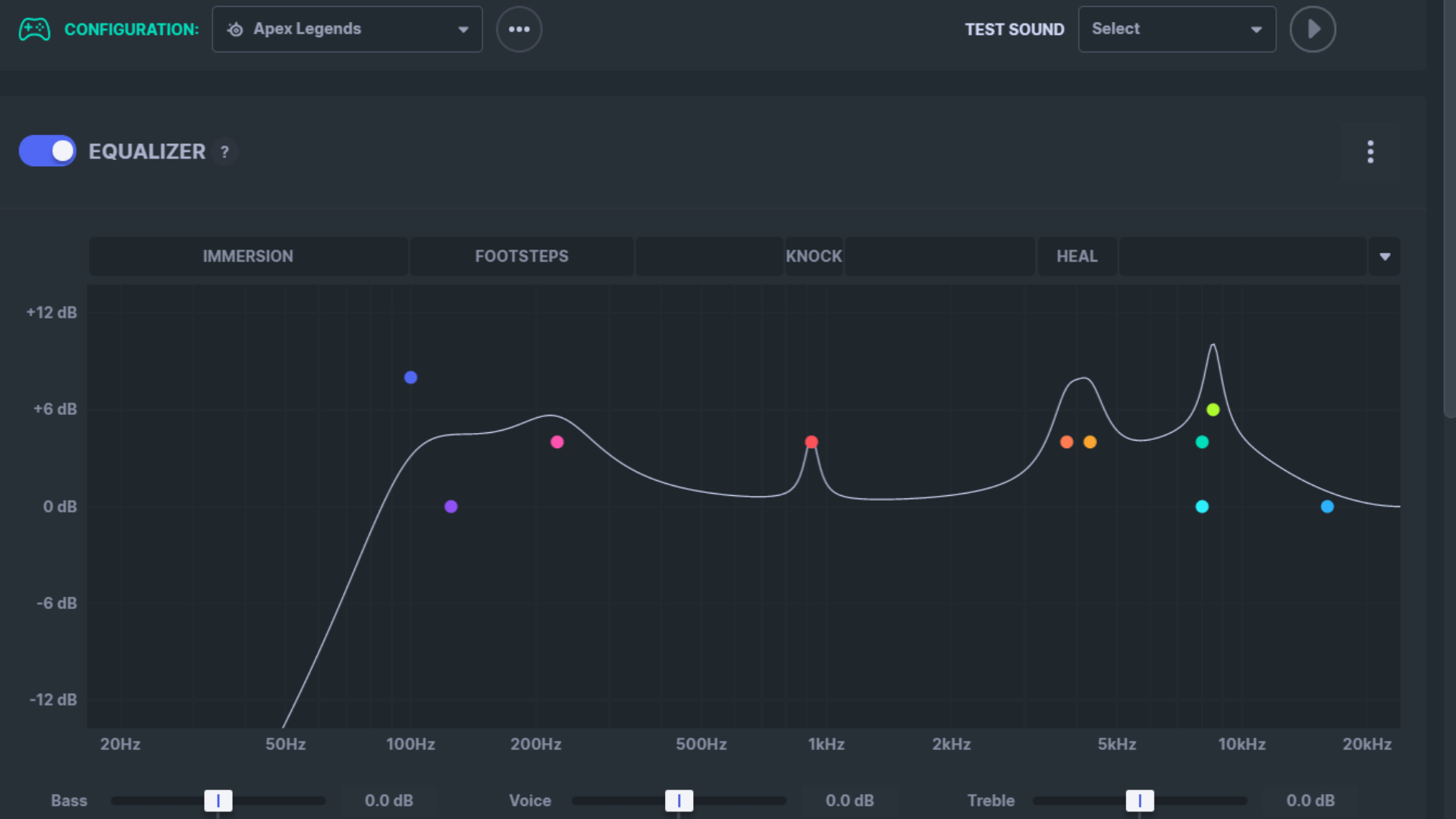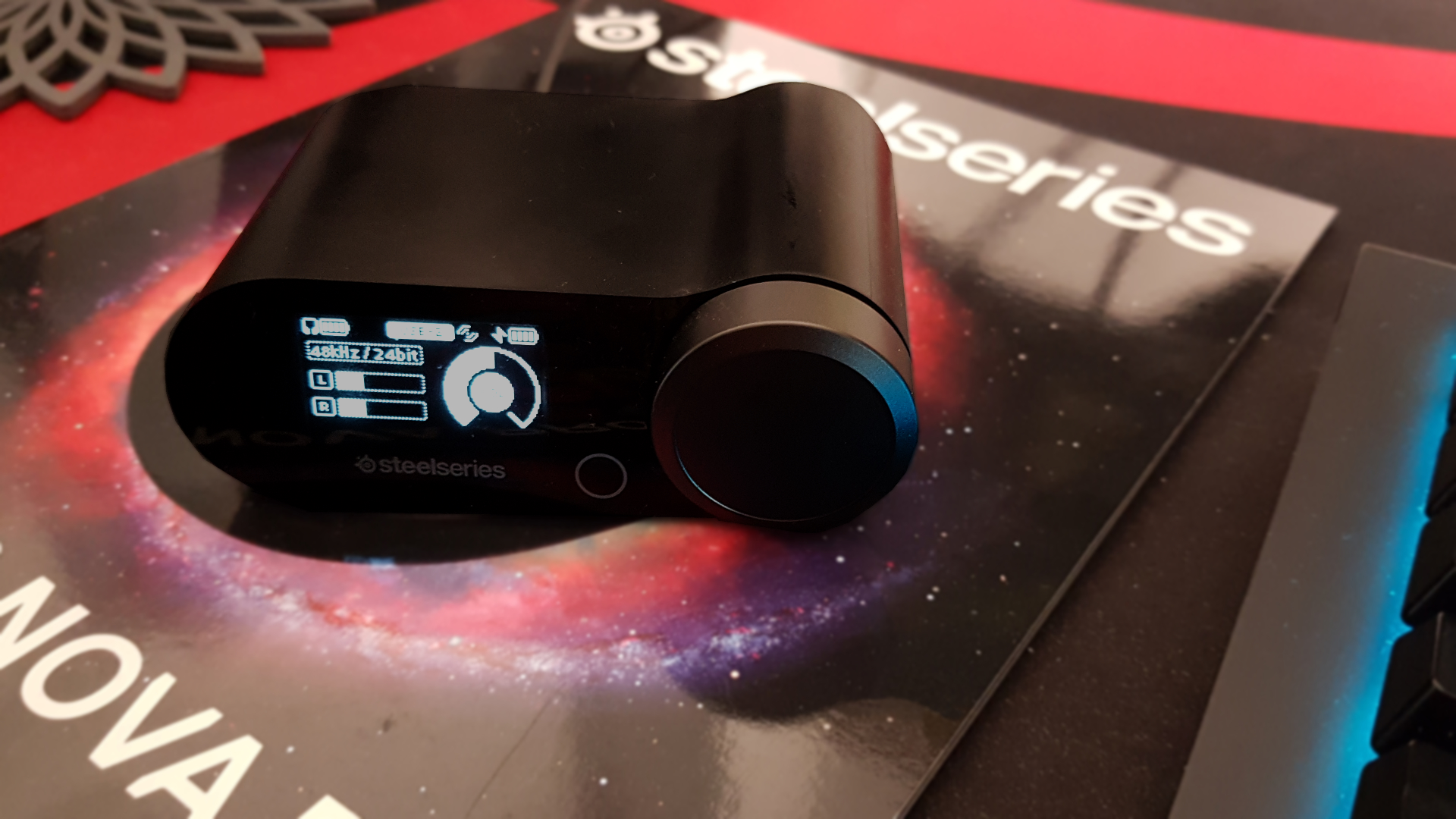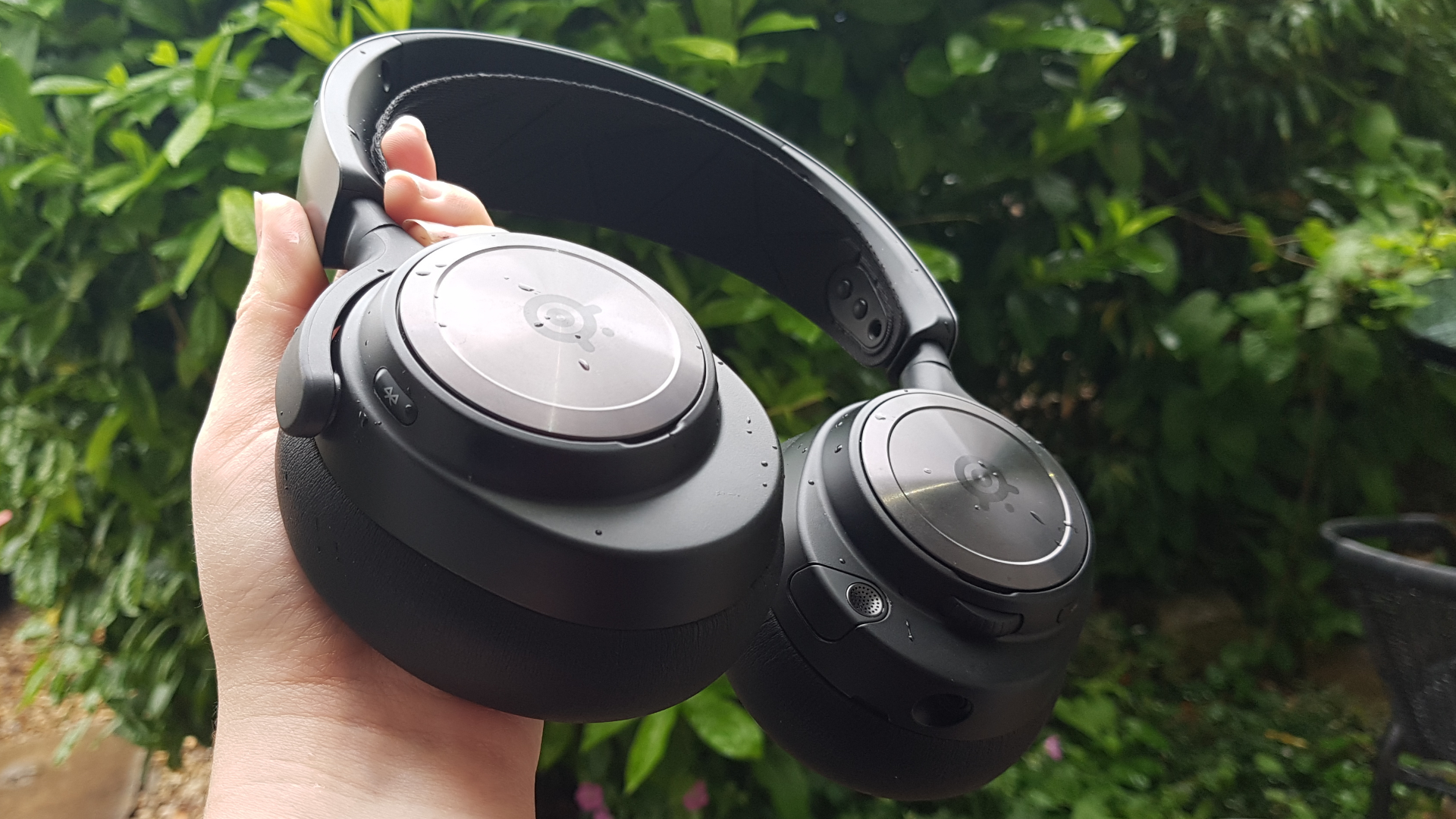Our Verdict
The Arctis Nova Pro Wireless headset delivers smashing sound quality that sits above many of its peers in the wireless gaming space. With impressive connectivity, fast charging, hot-swappable batteries, and great adjustability, it's supremely versatile. It comes at a steep price, but I'm ok with that.
For
- Smashing bass and audio quality
- Intuitive and informative new Sonar parametric EQ
- Comfortable, light, and highly adjustable
- DAC is an amp and fast charging spare battery dock
- Noise cancellation for mic and ear cups
Against
- Can only skip or pause music with headset buttons over Bluetooth
- Frightfully loud glitch noises when going out of range
- AI noise cancelling is a bit weak at the moment
PC Gamer's got your back
SteelSeries' Arctis Nova Pro wireless gaming headset comes in with an entirely new design, a far cry from previous Arctis models. That's not just in terms of audio and quality of life features, but also style and overall craftsmanship. The Nova nomenclature comes from the Latin novus, meaning new. Appropriate for a gaming headset that manages to branch out into somewhat uncharted territory, though you'll be paying a premium for the privilege of gaming at the cutting edge. Think in the region of $350 (£330).
In order to make that price worth it, SteelSeries' plan is to make the Arctis Nova Pro your 'everything' headset—not just the one you use for gaming. The real champion feature here is the multi-system connect feature, which lets you connect to two different devices via 2.4GHz wireless and Bluetooth simultaneously. The freedom to listen to a podcast on your cell while playing games on your PC, then switch off the Wi-Fi and walk out the door, listening uninterrupted, is kind of revolutionary for SteelSeries, though there are many out there that offer it.
The Arctis Nova Pro's made even more portable with a pair of hot-swappable, lithium-ion batteries. These charge up in under an hour slotted into the side of the ESS Sabre Quad-DAC, or through USB Type-C charging cable connected to the headset. I've not had to plug in once in the month I've had it; I just swap the battery over when one's about to die, which takes a good two and a half days of full use.
Reloading the lithium battery is a breeze, and if you can do it quickly they don't even switch off in the process. Lithium-ion batteries have their downsides, such as temperature sensitivity and the inability to charge if completely depleted, but the spare one fully charges in under an hour and I'm convinced more gaming headsets should sport this feature. It's a truly untethered experience that means I've hardly had a reason to take the Arctis Nova Pro off my head other than to admire it. I've been taking it to bed, for crying out loud.
When I finally slip the thing off to wear (rather comfortably) around my neck as the most expensive jewellery I've ever owned, there's a shock as I remember how much ambient noise stuff in the real world generates. After being treated to the Nova Pro's active, 'four-mic hybrid system' for noise cancelling, complete with three hear-through levels, I'd almost forgotten how loud my Razer Blackwidow X Chroma's clicky green switches are.

The fully retractable ClearCast Gen2 mic is a little fuzzier than expected in default mode—the main drawback to going wireless—but the noise reduction feature does a great job at nullifying that. It even comes with AI noise cancelling capability, but it still has a little way to go compared to something like Nvidia's RTX Voice.
Sadly, my friends could hear me blasting the sacred 10-hour Wii music loop with the mic fully retracted (although the fact it sits flush within the ear cup means I look much less like a flight controller than I would wearing the Razer Kraken X for example). Just know that the AI feature is still being worked on and improvements will eventually be deployed through software.
Connection: Bluetooth, 2.4 Wi-Fi
Type: Closed back
Frequency response: 10–40kHz
Drivers: 40mm
Connector: USB Type-C
Microphone: ClearCast Gen2, fully retractable, AI noise cancelling
Weight: 12oz (338g)
Battery life: 30hrs
Other features: Game DAC with 2 USB Type-C inputs, 2x 3.5mm audio in/out, Bluetooth and wireless simultaneous connection
Price: $350 | £330 | €380
Speaking of software, something called Sonar has now been deployed in the SteelSeries GG software, which is a fantastic accompaniment to the Nova Pro. Front and centre is the comprehensive equaliser. It works via a fully adjustable parametric curve, rather than simple sliders, and gives audiophiles a lot to play with.
I was impressed with how much I could crank the bass and gain up without an iota of distortion, too. My inner raver was supremely delighted when I discovered Minecraft trap actually slaps—I almost felt my chest cavity vibrate vicariously, like a creeper ready to pop. Listening to the same tune through the Arctis 7X on the same Sonar settings, I could not say the same.
While there are some hardware-specific Sonar features like the upcoming AI noise cancelling, Sonar equaliser curve has the potential to benefit any old headset. Particularly, since it highlights which sections of the curve relate to certain sounds in game (footsteps, explosions, etc.). It even delivers presets for a bunch of top games to help you make the most of this insider knowledge, and more presets are being added as time goes on.

Sonar's spatial audio is on point, and the slider gives you control over how performant or immersive it is, so you can be more accurate in competitive games and less so if you're just watching a movie or playing a walking sim. There are a bunch of other toggles to play around with to get your audio the way you want it, including a game-chat, mic and master mixer right there in the software. You can also pick from several levels of sidetone so you know what you sound like to others, with an impressive lack of delay.
The DAC for both the PlayStation and Xbox versions is well designed (each one's slightly different looking), and keeps a lot of these settings close at hand so you can switch them around in game, without alt-tabbing out. On both, there's a 3.5mm line in and out, as well as two USB Type-C connections for a 'first in gaming' multi system connection, so you can keep your PlayStation 5 and your PC connected at all times.
Also, the DAC serves as an 96kHz/24-bit amplifier, similar to that of the Arctis Pro + which also touts a wide 10-40kHz frequency response. Coupled with the Sonar equaliser, the quality of the newly designed drivers becomes immensely clear.

Unfortunately the Sonar EQ can only be used via wireless connection, but then over Bluetooth you gain the option to pause and skip music by tapping or double tapping the button on the headset. So, swings and roundabouts.
And all this is packed into a swanky, brushed gunmetal look, PVD-coated steel frame, that's supremely adjustable compared to a lot of our best wireless gaming headsets list. At 12oz (338g), it's not quite as light as something like the HyperX Cloud Alpha that currently holds the crown, yet it still manages to be ultra comfortable. That's especially around thanks to the mega soft, cushioned ear padding, rotating ear cups, and four-point adjustable, padded tension band.

Honestly, I'd rather blow the full $350, and screw the Nova Pro to my head for good.
The Nova pro beats out every headset on our list when it comes to quality of life features, but it's also a heck of a lot more expensive than your average wireless gaming headset. Still, the absolute torrent of functionality really has me wanting to recommend the Nova Pro.
On the one hand you could bag this super high-spec gaming headset that's been thoughtfully redesigned considering the successes and failures of previous generations; or you could essentially pay yourself $100 dollars to get a cheaper gaming headset, but forgo the utterly untethered, exemplary connectivity and sheer craftsmanship of the Nova Pro. Honestly, I'd rather blow the full $350, and screw the Nova Pro to my head for good.
Although I'll unscrew them if I ever need to go out of range of my devices, save me accidentally getting deafened.
The Arctis Nova Pro Wireless headset delivers smashing sound quality that sits above many of its peers in the wireless gaming space. With impressive connectivity, fast charging, hot-swappable batteries, and great adjustability, it's supremely versatile. It comes at a steep price, but I'm ok with that.

Screw sports, Katie would rather watch Intel, AMD and Nvidia go at it. Having been obsessed with computers and graphics for three long decades, she took Game Art and Design up to Masters level at uni, and has been rambling about games, tech and science—rather sarcastically—for four years since. She can be found admiring technological advancements, scrambling for scintillating Raspberry Pi projects, preaching cybersecurity awareness, sighing over semiconductors, and gawping at the latest GPU upgrades. Right now she's waiting patiently for her chance to upload her consciousness into the cloud.


